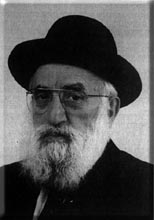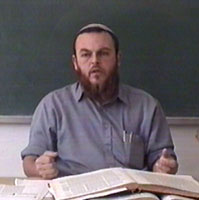Beit Midrash
- Shabbat and Holidays
- Jewish Holidays
- IDF Memorial Day
The gabbai of the shul – one of 7 Jews to have survived the attack – showed us a large book of the Torah, kept always at the front of the bima, covered in blood. "The sedra that week was actually Shoftim," he told us, "but we found the Chumash opened instead to Kedoshim."
This sedra is almost always read in the week during or just before Yom HaShoa & Yom Hazikaron, the two days when we, as a nation, pay our respects to the Kedoshim, the holy Jews who gave up their lives Al Kiddush Hashem. Their sacrifice sanctifies all the rest of us.
Yet as we look through Parshat Kedoshim, we see that the vast majority of Mitzvot therein deal with the living, not the dead: Dealing honestly with others by maintaining accurate weights & measures; reserving a place in our fields for the poor; paying workers on time; refraining from misleading another person; not bearing a grudge or taking revenge on someone else; loving the convert; loving all of those around us, even as we love ourselves.
The guiding principle here – stated at the very beginning, & then repeated at the very end of the sedra – is: "You shall be kadosh-holy, for I, Hashem, am holy."
In other words, though we cannot actually BE G-d, we can certainly imitate & emulate Him. He is kind; so we should be kind. He gives of Himself – selflessly, even when it gains Him nothing - & so should we. He loves others – showing particular care for the less fortunate & most needy - therefore we, too, must follow His example & attend to the needs of the vulnerable & the disenfranchised.
As I write these words, our community of Ra'anana is still reeling from the loss of Rav Daniel Beller zt"l. It would be hard to imagine someone who cared more for those around him than Rav Beller, who gave endlessly & completely to "the other," inspiring everyone around him to do better & be better. His legacy is that in death – especially in martyred death – one can indeed become Kadosh. But you
certainly don’t have to wait that long. Live holy – be holy.

BETWEEN YOM HASHOA & YOM HAZIKARON
Rabbi Ari Shvat | Nisan 5785
"The Very Same Fire" - Death and Redemption
Rabbi S. Yossef Weitzen | Iyar 5762
Remembrance Day for Israeli Soldiers and Victims of Acts of Terror
Yom Hazikaron
Rabbi Gideon Weitzman | 5764
























